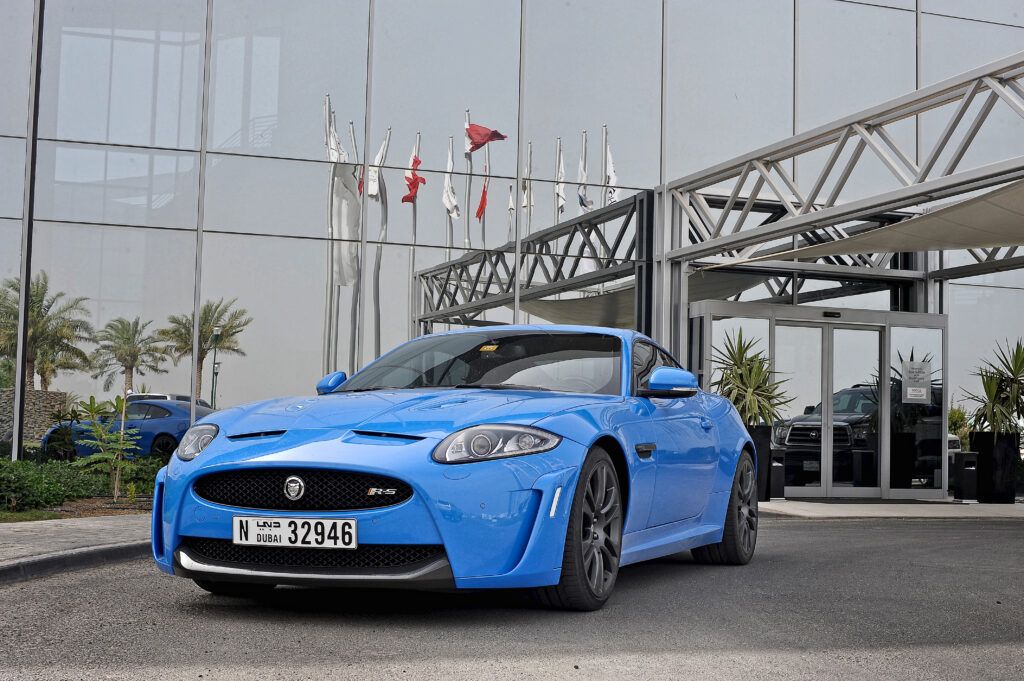
The 1960s, what a phenomenal era for the automobile! It was a decade of audacious designs, groundbreaking engineering, and a raw passion for performance that truly set the stage for automotive legends. Manufacturers were pushing boundaries, figuring out exactly what consumers craved, and delivering it with an intoxicating blend of power, sophistication, and undeniable style. This period didn’t just give us cars; it gave us icons that continue to define automotive excellence.
For enthusiasts and collectors today, the vehicles born from this golden age are far more than mere transportation; they are tangible pieces of history, artistic marvels, and, quite frankly, investments that have appreciated beyond imagination. These machines evoke a deep sense of nostalgia, reminding many of spirited drives down Main Street, the roar of a powerful engine, and the sheer thrill of owning something truly special. It’s no wonder that these vintage beauties are now commanding jaw-dropping prices at auctions worldwide, earning them the esteemed title of “collector’s gold.”
We’re about to embark on an exhilarating journey, a meticulous exploration of some of the most valuable and coveted cars from the 1960s. Prepare to delve into the stories of rarity, revolutionary design, and sheer horsepower that transformed these automobiles from cherished memories into priceless treasures. From legendary racing machines to unparalleled symbols of luxury, each vehicle on our list represents the pinnacle of its craft and continues to captivate the hearts of car aficionados across generations.
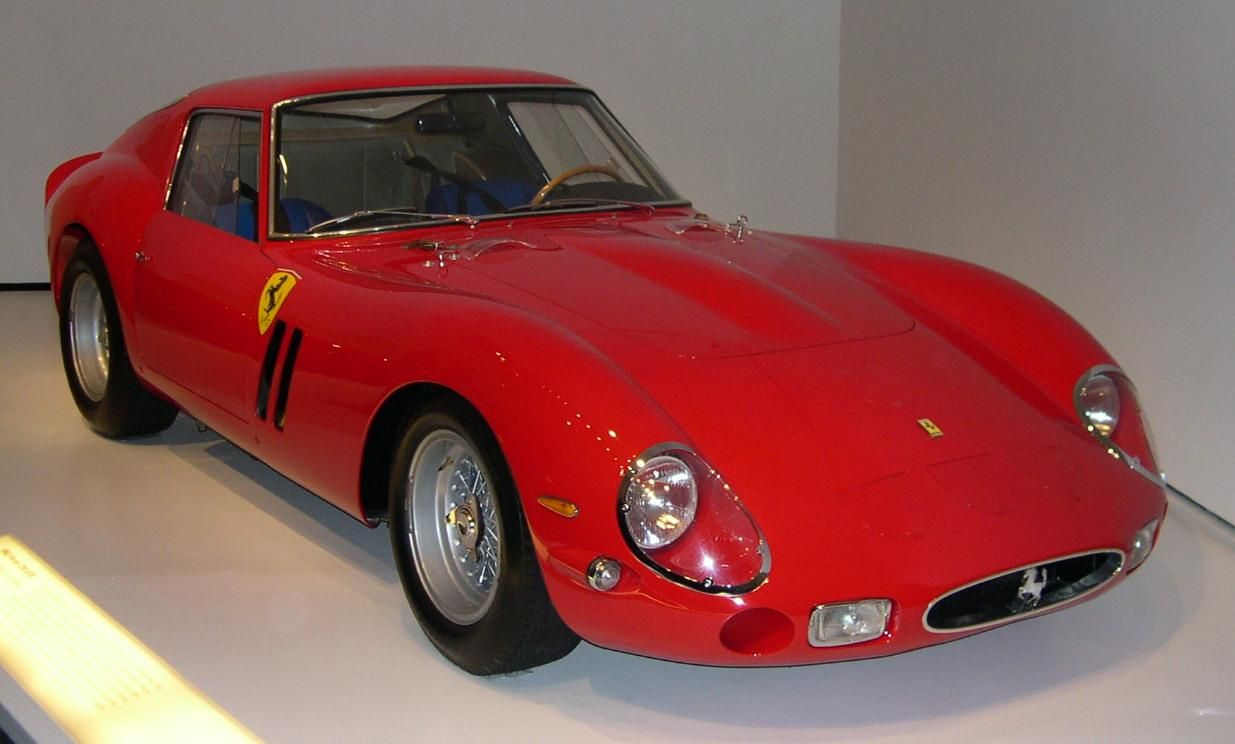
1. **1962 Ferrari 250 GTO** Let’s kick things off with what many consider the undisputed monarch of classic cars: the 1962 Ferrari 250 GTO. This machine isn’t just a car; it’s a legend, arguably the holy grail of rare cars and certainly one of the most sought-after Ferraris ever produced. With only 36 examples ever made, its exclusivity is almost as legendary as its consistent dominance in racing within its class.
The 250 GTO’s status as an automotive icon is solidified by its exquisite bodywork, a testament to Italian design prowess that blends aerodynamic efficiency with breathtaking beauty. Every curve and line of the 250 GTO was meticulously crafted, contributing to its racing success while simultaneously creating a timeless aesthetic that continues to captivate onlookers. This isn’t just a vehicle; it’s a rolling sculpture, a masterpiece of form following function.
Beyond its stunning looks, this was a pure race car, designed for extreme performance on the track. It was capable of hitting a top speed of 174 miles per hour and could rocket from 0 to 60 miles per hour in under 6 seconds, figures that were extraordinary for its time. The meticulous engineering behind its aerodynamics and handling proved its mettle as a formidable competitor.
Today, the value of a 1962 Ferrari 250 GTO is nothing short of stratospheric. The context notes that these cars now command prices upwards of $45 million at auction, with one recently selling for an astonishing $48.4 million. Back then, acquiring one required a personal invitation from Enzo Ferrari himself; today, you’d need to win the lottery several times over just to dream of ownership. This incredible appreciation reflects its unparalleled blend of rarity, racing pedigree, and sheer automotive artistry, cementing its place as one of the most valuable and coveted cars on the planet and the pinnacle of 1960s Italian sports car design.
Car Model Information: 2022 Maserati Levante GT
Name: Ferrari 250 GTO
Caption: 1963 Ferrari 250 GTO (chassis 4153GT)
Manufacturer: Ferrari
Production: 1962–1964,(36 produced)
Designer: Giotto Bizzarrini,Scaglietti
Class: Sports car
BodyStyle: berlinetta
Related: Ferrari 330#330 LMB,Ferrari P#250 LM
Layout: FR layout
Engine: 2,953 cc,Ferrari Colombo engine#250,Overhead camshaft#Single Overhead camshatf,Weber carburetor,Compression ratio
Powerout: 300 PS
Abbr: on
Order: flip @ 5500 rpm
Transmission: Manual transmission
Wheelbase: 2400 mm
Length: 4325 mm
Width: 1600 mm
Height: 1210 mm
Weight: convert
Predecessor: Ferrari 250 GT SWB
Successor: Ferrari 250 LM,Ferrari 288 GTO
Categories: All articles lacking reliable references, All articles needing additional references, All articles with bare URLs for citations, All articles with unsourced statements, Articles lacking reliable references from March 2022
Summary: The Ferrari 250 GTO is a grand tourer produced by Ferrari from 1962 to 1964 for homologation into the FIA’s Group 3 Grand Touring Car category. It was powered by Ferrari’s Tipo 168/62 Colombo V12 engine. The “250” in its name denotes the displacement in cubic centimeters of each of its cylinders; “GTO” stands for Gran Turismo Omologato, Italian for “Grand Touring Homologated”.
Just 36 of the 250 GTOs were manufactured between 1962 and 1964. This includes 33 cars with 1962–63 bodywork (Series I) and three with 1964 (Series II) bodywork similar to the Ferrari 250 LM. Four of the older 1962–1963 (Series I) cars were updated in 1964 with Series II bodies.
When new, the 250 GTO cost $18,000 in the United States, with buyers personally approved by Enzo Ferrari and his dealer for North America, Luigi Chinetti. This model has since become highly desired by automobile collectors and sales have repeatedly set price records. The current record for world’s most expensive Ferrari was set in June 2018 when a 1963 250 GTO (chassis 4153GT) was sold in a private sale for $70 million.
In 2004, Sports Car International placed the 250 GTO eighth on their list of Top Sports Cars of the 1960s, and nominated it the top sports car of all time. Similarly, Motor Trend Classic placed the 250 GTO first on a list of the “Greatest Ferraris of All Time”. Popular Mechanics named it the “Hottest Car of All Time”.
Get more information about: Ferrari 250 GTO
Buying a high-performing used car >>>
Brand: Ferrari Model: 250 GTO
Price: $35,799 Mileage: 16,241 mi.
Read more about: The Gears of Time: Unearthing 14 Criminally Underrated Rides That Deserve Their Moment in the Sun

2. **1966 Shelby Cobra 427** From Italian elegance, we shift to raw American muscle, perfected by a legend: Carroll Shelby. The 1966 Shelby Cobra 427 is Carroll Shelby’s masterpiece, a truly fearsome machine that merged a lightweight British AC Ace body with a fire-breathing Ford V8 engine. This audacious combination resulted in a sports car that was brutally fast, defining what an American performance vehicle could truly be.
The visceral experience of this car is something that has resonated through the decades. As the context vividly describes, “I remember when these beauties would roar down the street – you could feel that 427 cubic inch engine in your chest before you even saw the car!” This was not a car for the faint of heart; it was built for speed and pure, unadulterated power.
The Cobra 427 wasn’t just powerful; it was the fastest American car you could buy in ’65, showcasing a combination of agility and brute force that made it a legend on the track and a symbol of American ingenuity. Its engineering brilliance lay in blending a refined European chassis with the colossal power of an American V8, creating a unique driving dynamic that was both terrifying and exhilarating.
The enduring legacy of the Cobra 427 is celebrated by collectors and racers alike, admired for its performance and timeless design. It remains one of the most replicated designs in automotive history, a testament to its iconic status. Original models now fetch anywhere from $1.5 to $5.5 million at auction, marking it as a pinnacle of 1960s sports car engineering and a highly sought-after piece of American automotive heritage.
Car Model Information: 2022 Maserati Levante GT
Caption: AC Cobra 427
Layout: front-engine, rear-wheel drive layout
Manufacturer: AC Cars,Shelby American
Production: 1965–1967
Name: MkIII
Aka: AC Shelby Cobra , Shelby AC Cobra
BodyStyle: Roadster (automobile)
Assembly: Thames Ditton,Surrey,England
Predecessor: AC Ace
Class: Sports car
Successor: AC MK IV
Related: AC Frua,Shelby Daytona
Engine: convert,V8 engine
Wheelbase: 90 in
Abbr: on
Order: flip
Length: 156 in
Width: 68 in
Height: 48 in
Weight: 2355 lb
Categories: 1960s cars, AC vehicles, All articles with unsourced statements, Articles with short description, Articles with unsourced statements from December 2014
Summary: The AC Cobra, sold in the United States as the Shelby Cobra and AC Shelby Cobra, is a sports car manufactured by British company AC Cars, with a Ford V8 engine. It was produced intermittently in both the United Kingdom and later the United States since 1962.
Get more information about: AC Cobra
Buying a high-performing used car >>>
Brand: Shelby Model: Cobra 427
Price: $35,799 Mileage: 16,241 mi.
Read more about: Boomers, Get Ready to Rev! These 12 Iconic ’60s Car Models Still Drive Our Dreams
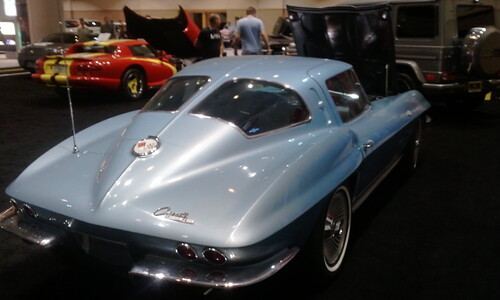
3. **1963 Chevrolet Corvette Sting Ray (Split-Window)** The Chevrolet Corvette has always been a mainstay of the American sports car scene, but the 1963 Sting Ray, with its iconic split-window coupe design, holds a particularly special place. This model is undeniably among the most recognizable Corvettes ever made, featuring a striking fiberglass body and an independent rear suspension that signaled a technologically advanced future for the American sports car.
The split window design itself was a bold statement, creating a distinctive silhouette that collectors now covet. While the design was controversial at the time – “some folks loved it, others hated it” – today, “everyone wishes they’d bought one!” This unique feature, lasting only one year, has made this Corvette one of the most sought-after American classics, embodying the spirit of innovation and daring aesthetics that defined 1960s automotive creativity.
Beyond its visual appeal, the Sting Ray truly looked “more like a stealthy fighter pilot than it does a sports car,” with Chevy adding a fiberglass body and sloping the rear tail to give it its famous aggressive look. This two-seater had an option of a V6 engine offering over 300 horsepower, demonstrating that it delivered serious performance to match its striking appearance. It truly is “the car you think of when you think of the sport of the car.”
With only about 21,000 vehicles ever produced, a pristine example of this sought-after American classic can fetch over $500,000 today. Its combination of cutting-edge design and impressive performance made it a standout in the automotive world, cementing its enduring legacy as a symbol of innovation and style, and continuing to captivate enthusiasts with its timeless appeal and engineering excellence.
Car Model Information: 2022 Maserati Levante GT
Name: Chevrolet Corvette (C2)
Caption: 1963 Chevrolet Corvette Sport Coupe
Manufacturer: Chevrolet
Aka: Chevrolet Corvette Sting Ray
Production: August 1962–July 1967
ModelYears: 1963–1967
Platform: Series 0800 (1962-1964),Series 194 (1965-1967)
Chassis: Body-on-frame
Assembly: St. Louis, Missouri
Predecessor: Chevrolet Corvette (C1)
Successor: Chevrolet Corvette (C3)
Class: Sports car
BodyStyle: Convertible (car),coupé
Layout: Front-engine, rear-wheel-drive layout
Engine: {{cvt,327,cuin,L,1,Chevrolet small-block engine#327,V8 engine
Wheelbase: cvt
Length: cvt
Width: cvt
Height: cvt
Weight: cvt
Transmission: manual transmission,manual transmission,Powerglide
Related: Bill Thomas Cheetah
Designer: Larry Shinoda
Categories: 1960s cars, All articles needing additional references, All articles with specifically marked weasel-worded phrases, All articles with unsourced statements, Articles needing additional references from July 2024
Summary: The Chevrolet Corvette (C2) is the second-generation Corvette sports car, produced by the Chevrolet division of General Motors (GM) for the 1963 through 1967 model years.
Get more information about: Chevrolet Corvette (C2)
Buying a high-performing used car >>>
Brand: Chevrolet Model: Corvette Sting Ray
Price: $35,799 Mileage: 16,241 mi.
Read more about: Icons of the Asphalt: 14 Classic Cars from the 1960s That Defined a Golden Era of Automotive Excellence

4. **1961 Jaguar E-Type (XKE)** Stepping across the Atlantic, we encounter a car that even Enzo Ferrari himself couldn’t help but praise, famously calling the 1961 Jaguar E-Type “the most beautiful car ever made.” Who are we to argue with such an esteemed connoisseur? This British masterpiece, also known as the XKE, combined race-car technology with unbelievably graceful proportions, instantly capturing the imagination of car enthusiasts worldwide.
The E-Type’s sleek lines, smooth inline-six engine (later a V12), and advanced disc brakes were a revelation, setting a new benchmark for sports car design and performance. Its combination of cutting-edge technology and stunning aesthetics made it a true game-changer, appealing to both the performance-minded and those who valued exquisite design.
Early Series 1 models, particularly the rare “flat floor” versions, exemplify the E-Type’s groundbreaking allure. Even back then, people recognized its special quality; as the context recalls, “Even back then, we knew this cat had something special about it – those curves were unlike anything else on the road.” This distinctiveness contributed significantly to its legendary status.
Today, the 1961 Jaguar E-Type remains a symbol of 1960s British motoring excellence, with its timeless design and exceptional performance capabilities continuing to be celebrated by collectors and admirers. Pristine examples, especially those early models, can sell for over $300,000, underscoring its status as a beloved icon of automotive design and engineering, a true embodiment of elegance and innovation.
Car Model Information: 1971 Jaguar E-Type Restomod
Sp: uk
Name: Jaguar E-Type
Caption: 1961 E-Type Series 1 3.8-Litre, the first production model of this open two-seater
Aka: Jaguar XK-E , Jaguar V-12
Manufacturer: Jaguar Cars
Production: 1961–1974
Class: Sports car
Predecessor: Jaguar XK150
Related: Jaguar D-Type,Jaguar XJ13
Successor: Jaguar XJS
Layout: FMR layout
Assembly: Coventry,England
Designer: Malcolm Sayer
Categories: 1970s cars, 2+2 coupés, All articles with dead external links, All articles with specifically marked weasel-worded phrases, All articles with unsourced statements
Summary: The Jaguar E-Type, or the Jaguar XK-E for the North American market, is a British front mid-engined sports car that was manufactured by Jaguar Cars Ltd from 1961 to 1974. Its sleek appearance, advanced technologies, high performance, and competitive pricing established it as an icon. The E-Type’s claimed 150 miles per hour (240 km/h) top speed, sub-7-second 0 to 60 mph (97 km/h) acceleration, largely unitary body construction, front and rear independent suspension with disc brakes, mounted inboard at the rear, and rack-and-pinion steering spurred industry-wide changes.
The E-Type was based on Jaguar’s D-Type racing car, which had won the 24 Hours of Le Mans for three consecutive years beginning in 1955.
The E-Type employed what was, for the early 1960s, a novel design principle, with a front subframe carrying the engine, front suspension and front bodywork bolted directly to the body tub. No ladder frame chassis, as was common at the time, was needed and as such the first cars weighed only 1,315 kg (2,899 lb).
It is rumored that, on its debut on 15 March 1961, Enzo Ferrari called it “the most beautiful car ever made”, but this statement is not fully confirmed. In 2004, Sports Car International magazine placed the E-Type at number one on their list of Top Sports Cars of the 1960s. In March 2008, the Jaguar E-Type ranked first in The Daily Telegraph’s online list of the world’s “100 most beautiful cars” of all time.
Get more information about: Jaguar E-Type
Buying a high-performing used car >>>
Brand: Jaguar Model: E-Type
Price: $64,900 Mileage: 2,455 mi.
Read more about: Icons of the Asphalt: 14 Classic Cars from the 1960s That Defined a Golden Era of Automotive Excellence
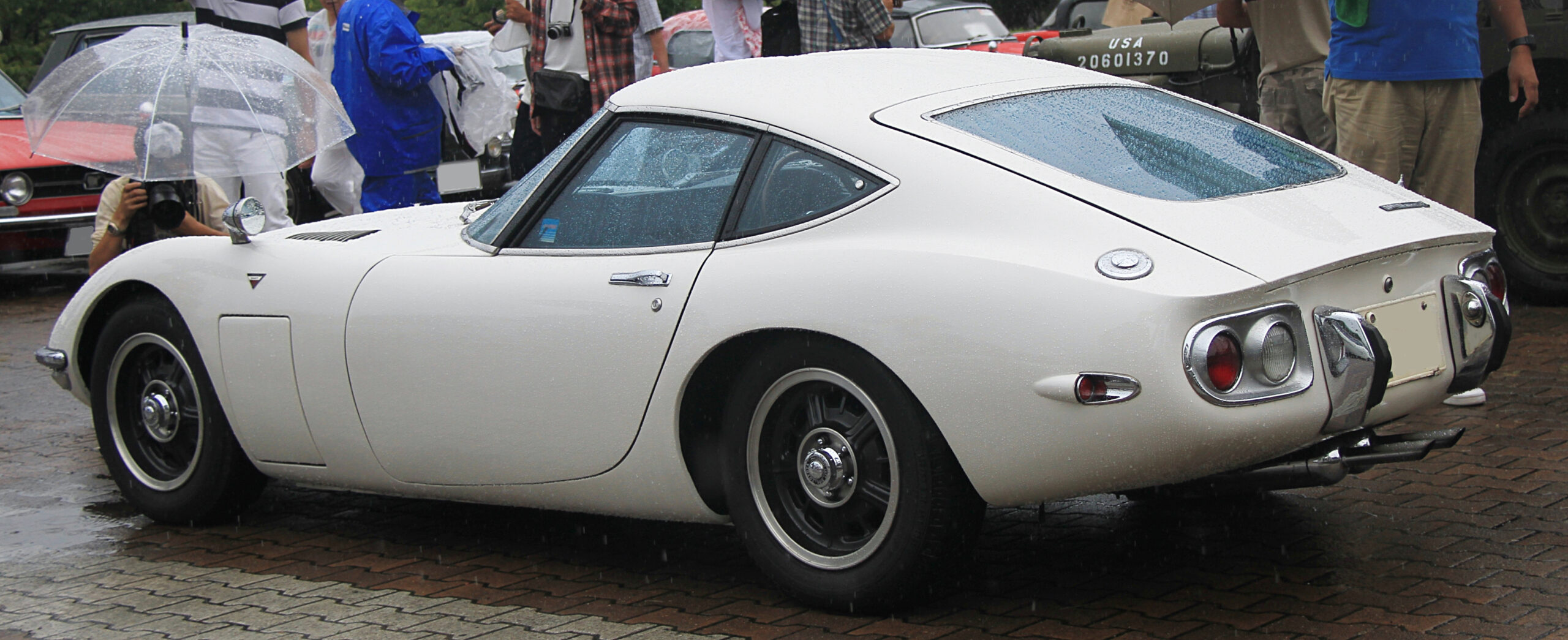
5. **1967 Toyota 2000GT** In a decade dominated by European and American powerhouses, Japan made an unforgettable entry onto the global sports-car stage with the 1967 Toyota 2000GT. This sleek coupe wasn’t just a stunner; it was Japan’s first supercar, a groundbreaking machine that completely redefined perceptions. As the context emphatically states, “Nobody took Japanese sports cars seriously until this beauty came along – it changed everything we thought we knew about Japanese automobiles.”
This revolutionary vehicle featured a Yamaha-tuned inline-six engine and an elegant, distinctive styling that turned heads wherever it went. The combination of precision Japanese engineering and sophisticated design created a car that was not only aesthetically pleasing but also a formidable performer, challenging established norms in the automotive world.
The 2000GT’s success in international racing further solidified its reputation, showcasing Toyota’s commitment to excellence and performance on a global scale. This car wasn’t merely about speed; it was about precision, refinement, and a bold statement of capability, proving that Japan could produce a world-class sports car worthy of international acclaim.
Due to its incredibly limited production – only 351 were ever made – the 1967 Toyota 2000GT is incredibly collectible today, fetching around $1 million or more at auction. Its legacy as a groundbreaking sports car continues to be celebrated, embodying the global reach of 1960s automotive design. It stands as a testament to Japanese ingenuity, admired for its beauty, engineering, and the pivotal role it played in establishing Japan’s place in the high-performance automotive world.
Read more about: Revving Through History: The 14 Unforgettable Machines That Defined the Roaring Sixties Automotive Era
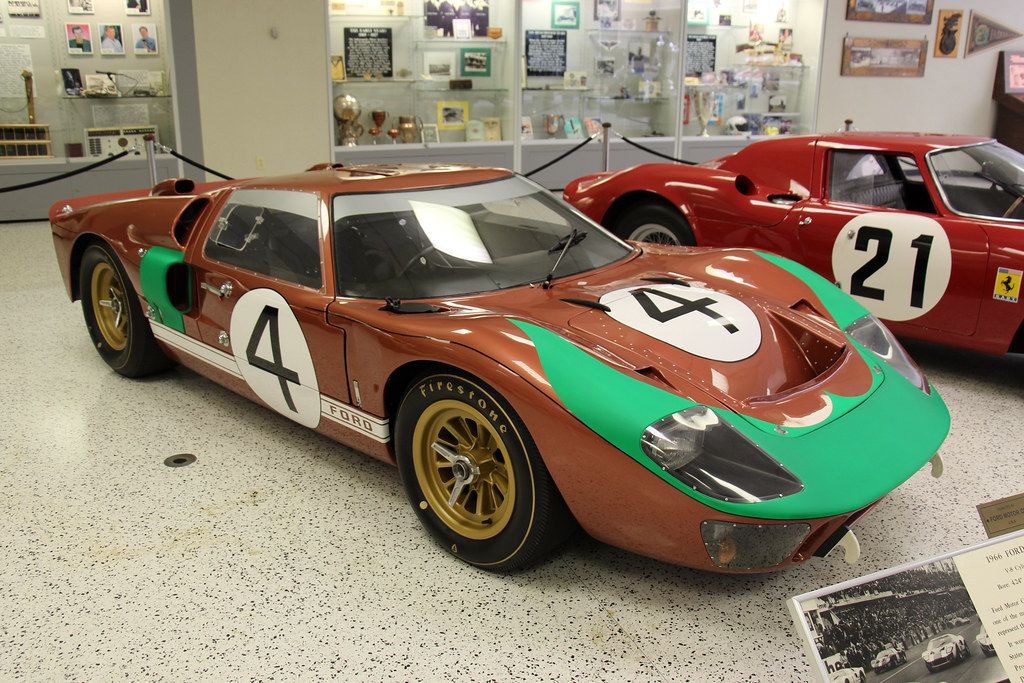
6. **1966 Ford GT40** If there’s one car that exemplifies American grit and determination on the international racing stage, it’s the 1966 Ford GT40. This wasn’t just a car; it was a mission, “the car that beat Ferrari at Le Mans four years in a row.” This monumental achievement solidified its place in history, showcasing that American muscle could not only play the Europeans’ game but decisively win it.
The GT40 was a marvel of engineering, built specifically for endurance racing with a powerful V8 engine that delivered a spine-tingling roar. The context notes, “The sound of that V8 engine still gives me goosebumps,” a sentiment shared by anyone who has had the privilege of witnessing this beast in action. Its aerodynamic design and robust mechanics were crafted for one purpose: victory.
This vehicle represented a significant moment in automotive history, symbolizing America’s bold challenge to European dominance in motorsports. The sheer scale of Ford’s commitment to this project, driven by a fierce desire to triumph, resonated deeply with the public. It proved that American manufacturers could innovate at the highest levels of global competition.
Original GT40s are, as expected, extremely valuable today, fetching anywhere from $3 million to $11 million at auction. Its formidable track record and profound historical significance make it a cornerstone for any serious collector. The 1966 Ford GT40 stands as a powerful symbol of automotive triumph, a testament to American engineering prowess, and an enduring legend in the world of high-performance racing.
Car Model Information: 1966 Ford GT40
Name: Ford GT40
Caption: Ford GT40 Mk.I in JWA Gulf Oil racing colors
Manufacturer: Ford Advanced Vehicles,John Wyer,Kar Kraft,Holman-Moody,Shelby American
Production: 1964–1969
Assembly: Slough,Los Angeles
Designer: Ron Bradshaw
Class: Group 4 (racing),Group 5 (racing),Group 6 (racing)
BodyStyle: coupé
Layout: MR layout
Engine: Cubic inch,289 CID (4737 cc) V-8,302 CID (4942 cc) V-8,427 CID (6997 cc) V-8
Transmission: Manual transmission
Wheelbase: 95 in
Abbr: on
Length: 160 in
Width: 70 in
Height: 40.5 in
Weight: convert
Successor: Ford P68
Sp: uk
Categories: 24 Hours of Le Mans race cars, All Wikipedia articles needing clarification, All articles needing additional references, All articles that may contain original research, All articles with specifically marked weasel-worded phrases
Summary: The Ford GT40 is a high-performance mid-engined racing car originally designed and built for and by the Ford Motor Company to compete in 1960s European endurance racing and the World Sportscar Championship. Its specific impetus was to beat Scuderia Ferrari, which had won the prestigious 24 Hours of Le Mans race for six years running from 1960 to 1965. As rules of the time required that GT cars were built in dozens and sold, around 100 cars in total have been made, mostly as 289 cu in (4.7 L) V8-powered Mk Is, of which at least 50 were made in 1965, which allowed FIA-homologation as Group-4-Sportscar for 1966 until 1971. This gave the old MK.I car of Gulf-Wyer the chance to enter and win Le Mans in 1968 and 1969 after prototypes had been limited to 3 litre, with the performance of the Ford 7-litre-V8 in the factory 1966 Mk.II and 1967 Mk.IV prototypes causing this rule change, which also banned the 4-litre V12 Ferrari 330P4 and others after 1967. The Mk.III designation was used for some road-legal cars.
The Ford GT40 debuted in 1964, and improvements in 1965 led to Ford winning World Championships categories from 1966 to 1968. The first Le Mans win came in 1966 with three 427 cu in (7.0 L) powered Mk.II prototypes crossing the finish line together, the second in 1967 with the same engine now in quite different US-built Mk.IV prototype chassis similar to the “J-car” mule. In order to lower ever-higher race top speeds, a rule change from 1968 onwards limited prototypes to 3.0 litre Formula 1 engines; the sportscar “loophole”, however, allowed the private JW “Gulf Oil” team to win at Le Mans in 1968 and 1969 running a Mk.I with a 5.0 litre engine.
The GT40 effort began in Britain in the early 1960s when Ford Advanced Vehicles began to build the Mk I, based upon the British Lola Mk6, in Slough, UK. After disappointing race results, the engineering team was moved in 1964 to Dearborn, Michigan, US, to design and build cars by its advanced developer, Kar Kraft. All chassis versions were powered by a series of American-built Ford V8 OHV engines modified for racing.
In the 1966 Le Mans, the GT40 Mk II car broke Ferrari’s winning streak, making Ford the first American manufacturer to win a major European race since Jimmy Murphy’s Duesenberg in the 1921 French Grand Prix. In the 1967 Le Mans, the GT40 Mk IV car became the only car developed and assembled entirely (both chassis and engine) in the United States to achieve the overall win at Le Mans.
Get more information about: Ford GT40
Buying a high-performing used car >>>
Brand: Ford Model: GT40
Price: $110,000 Mileage: 13,350 mi.
Read more about: Dwayne ‘The Rock’ Johnson Stuns Fans with Unrecognizable New Look: A Deep Dive into His Career Evolution and Coveted Car Collection
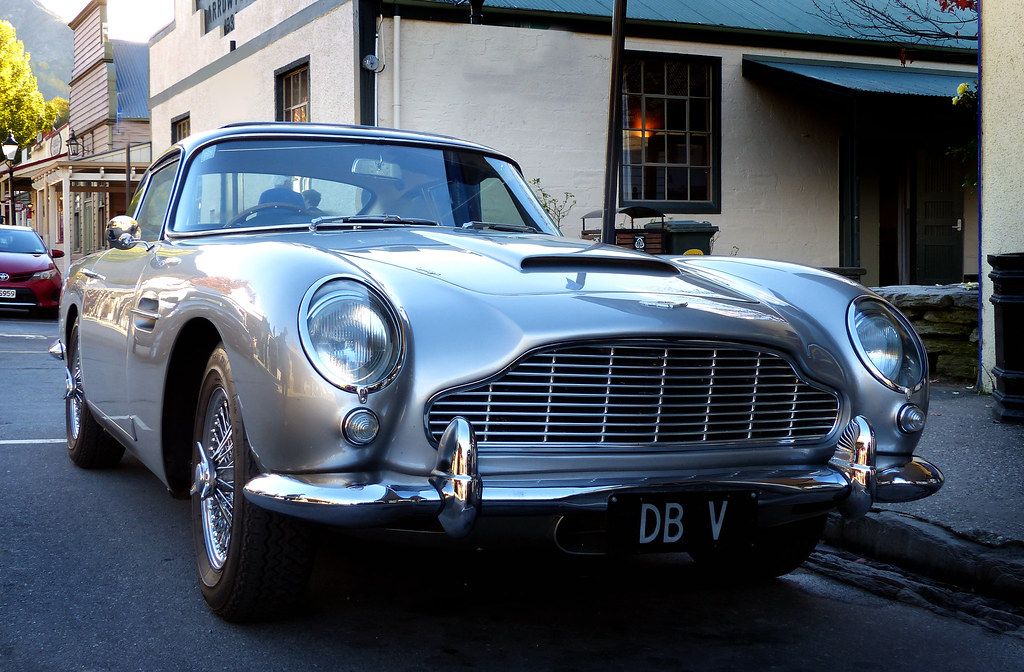
7. **1963 Aston Martin DB5** Finally, we arrive at a car synonymous with sophistication, espionage, and timeless British elegance: the 1963 Aston Martin DB5. Famously recognized as James Bond’s car of choice in ‘Goldfinger,’ its appearance in the film cemented its status as an automotive icon and a dream car for enthusiasts worldwide. As many will recall, “We all wanted to be 007 after seeing ‘Goldfinger,’ and this car was a big part of that dream – even without the ejector seat!”
The DB5 defined British grand-tourer elegance, combining a potent inline-six engine with a level of refined luxury that was unparalleled. Its sleek lines, distinguished grille, and powerful presence exuded class and performance in equal measure. This was a car that represented the very best of British automotive craftsmanship and style.
This magnificent grand tourer offered an exhilarating driving experience without sacrificing an ounce of its inherent dignity or comfort, making it a true gentleman’s express. Every detail, from its luxurious interior to its robust mechanicals, was designed to provide an unparalleled blend of performance and sophistication, perfect for both long-distance touring and spirited drives.
Today, these elegant British grand tourers continue to captivate, selling for $1 million or more. The DB5’s association with the suave secret agent only enhanced its allure, but its intrinsic qualities of timeless design, exceptional craftsmanship, and impressive performance are what truly ensure its place as a revered name in the automotive world. The 1963 Aston Martin DB5 is not just a car; it’s a cultural phenomenon and a magnificent piece of motoring history.
Beyond these automotive titans, the 1960s gifted us with a treasure trove of other remarkable machines, each carrying its own unique story of engineering, style, and cultural impact. These vehicles, while perhaps not always commanding the absolute highest prices, are equally significant in defining the era and continue to be passionately sought after by discerning collectors. We now continue our journey through this exhilarating decade, exploring more of these ’60s collector’s gems that have left an indelible mark on automotive history and remain enduring symbols of an extraordinary time.
Car Model Information: 2022 Honda Civic Sport
Name: Aston Martin DB5
Manufacturer: Aston Martin
Production: 1963–1965 (1,059 units),2020 (25 units)
Assembly: Newport Pagnell,England
Designer: Carrozzeria Touring Superleggera
Class: Grand tourer
BodyStyle: coupé
Layout: Front-engine, rear-wheel-drive layout
Engine: DOHC,Straight-6,3995 cc
Order: flip
Abbr: on
Powerout: convert
Transmission: ZF Friedrichshafen
Length: 4570 mm
Width: 1680 mm
Wheelbase: 98.0 in
Predecessor: Aston Martin DB4
Successor: Aston Martin DB6
Doors: 2
Weight: 3311 lb
Sp: uk
Categories: Articles with short description, Aston Martin vehicles, CS1: unfit URL, Cars discontinued in 1965, Cars introduced in 1963
Summary: The Aston Martin DB5 is a British grand tourer (GT) produced by Aston Martin and designed by Italian coachbuilder Carrozzeria Touring Superleggera. Originally produced from 1963 to 1965, the DB5 was an evolution of the final series of DB4. The “DB” designation is from the initials of David Brown who built up the company from 1947 onwards.
The DB5 is best-known for its role in the James Bond films. It was first driven by the fictional spy in the film Goldfinger (1964). In 2013, the car featured on a “British Auto Legends” postage stamp issued by the Royal Mail.
Get more information about: Aston Martin DB5
Buying a high-performing used car >>>
Brand: Aston Martin Model: DB5
Price: $25,849 Mileage: 16,061 mi.
Read more about: Revving Through History: The 14 Unforgettable Machines That Defined the Roaring Sixties Automotive Era
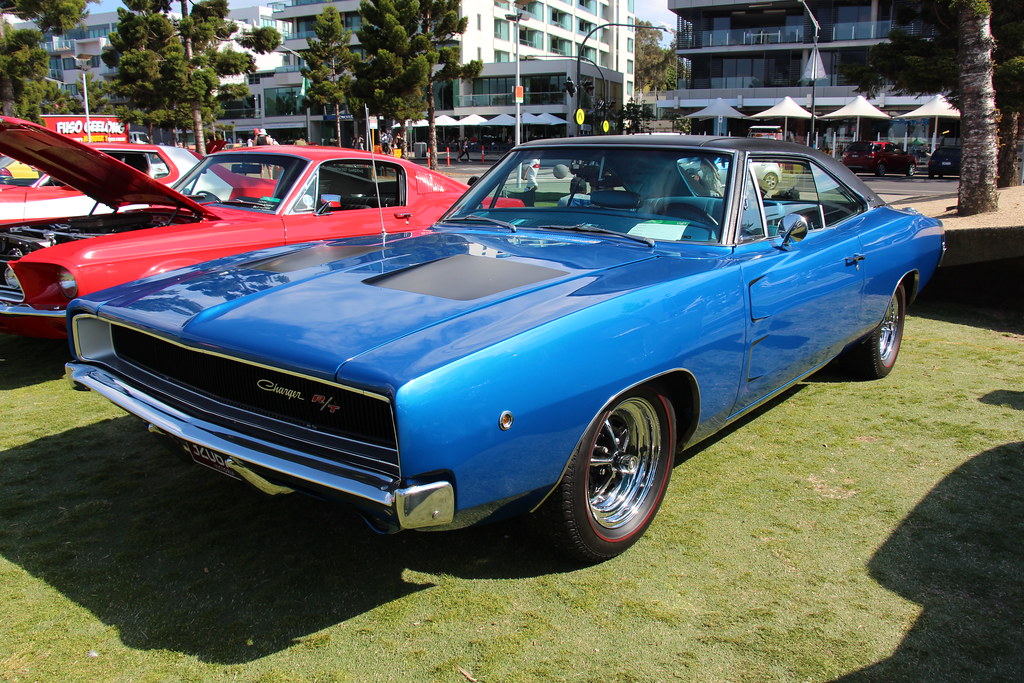
8. **1968 Dodge Charger R/T** From the sleek European sports cars, we pivot back to the roaring heart of American muscle with the 1968 Dodge Charger R/T. This car wasn’t just a vehicle; it was an attitude, a statement of raw power and undeniable presence. Immortalized on the silver screen in classics like ‘Bullitt’ and the beloved ‘The Dukes of Hazzard,’ the Charger R/T cemented its place in pop culture as the ultimate bad boy’s car, a true legend of the asphalt.
What truly set the 1968 Charger R/T apart was its menacing aesthetic. Those distinctive hidden headlights, coupled with its aggressive, recessed grille, gave it a look unlike anything else prowling the streets. It exuded a tough, no-nonsense aura that perfectly encapsulated the burgeoning muscle-car phenomenon. The sheer visual impact of this car meant you knew something special was coming your way long before you heard the rumble of its powerful engine.
Beyond its star power and formidable styling, the Charger R/T delivered where it counted: performance. The ‘R/T’ designation stood for ‘Road/Track,’ a promise of serious capability that the car more than lived up to. This was a machine built for enthusiasts who craved thrilling acceleration and a visceral driving experience. Today, a pristine example of this iconic muscle car can easily fetch over $200,000 at auction, a testament to its enduring legacy and its unshakeable grip on the hearts of collectors.
Car Model Information: 2022 Honda Civic Sport
Name: Dodge Charger
Caption: 1969 Dodge Charger
Manufacturer: Dodge
Production: 1966–1978,1981–1987,2005–present
ModelYears: 1966–1978,1982–1987,2006–present
Categories: 1960s cars, 1970s cars, 1980s cars, 2000s cars, 2010s cars
Summary: The Dodge Charger is a model of automobile marketed by Dodge in various forms over eight generations since 1966.
The first Charger was a show car in 1964. A 1965 Charger II concept car resembled the 1966 production version.
In the United States, the Charger nameplate has been used on mid-size cars, personal luxury coupes, subcompact hatchbacks, and full-size sedans.
Get more information about: Dodge Charger
Buying a high-performing used car >>>
Brand: Dodge Model: Charger R/T
Price: $25,849 Mileage: 16,061 mi.
Read more about: Boomers, Get Ready to Rev! These 12 Iconic ’60s Car Models Still Drive Our Dreams
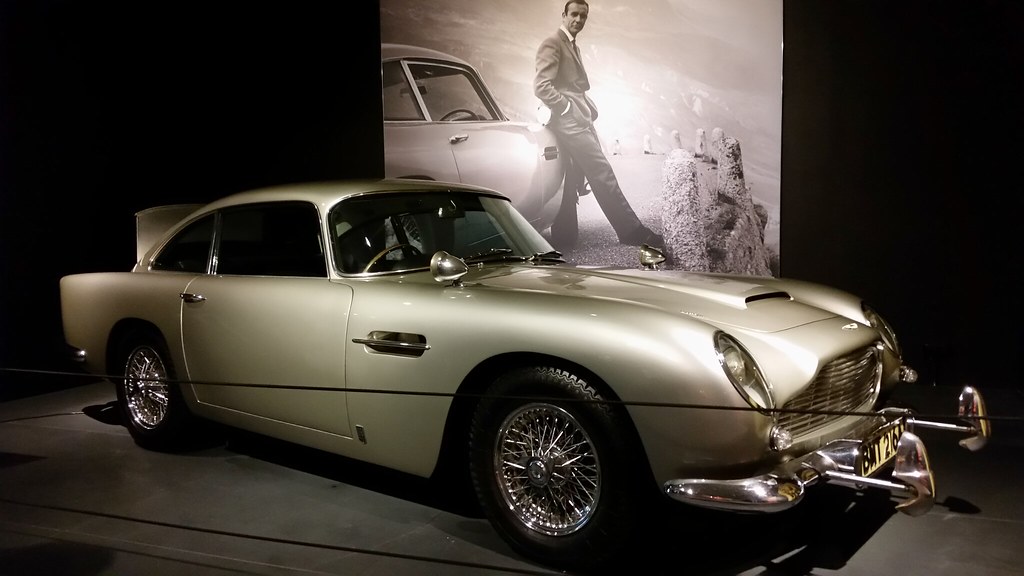
9. **1964 Aston Martin DB5** Returning to the realm of British sophistication, we encounter the 1964 Aston Martin DB5, a car that continues to define automotive elegance and high-octane adventure. Following the foundational 1963 model, this iteration continued to captivate the imagination, largely due to its indelible association with the world’s most famous secret agent, James Bond. Its appearance in ‘Goldfinger’ didn’t just make it a movie prop; it transformed it into a global icon, a symbol of suave danger and refined power.
There’s an undeniable allure to the DB5, a magnetism that goes beyond mere transportation. For many, it represented the pinnacle of automotive aspiration, a dream car embodying sophistication and capability. As the sentiment from the era goes, “We all wanted to be 007 after seeing ‘Goldfinger,’ and this car was a big part of that dream – even without the ejector seat!” It encapsulated a fantasy of adventure and luxury, making it more than just a car—it was an extension of an aspirational lifestyle.
These elegant British grand tourers were masterpieces of design and engineering, combining a potent engine with an interior crafted for supreme comfort and style. Every curve and line of the DB5 spoke of understated power and meticulous craftsmanship, making it a truly timeless design. Today, these exceptional vehicles continue to command impressive prices, with models selling for $1 million or more, affirming their status as cherished pieces of motoring history and cultural touchstones.
Car Model Information: 2022 Honda Civic Sport
Name: Aston Martin DB5
Manufacturer: Aston Martin
Production: 1963–1965 (1,059 units),2020 (25 units)
Assembly: Newport Pagnell,England
Designer: Carrozzeria Touring Superleggera
Class: Grand tourer
BodyStyle: coupé
Layout: Front-engine, rear-wheel-drive layout
Engine: DOHC,Straight-6,3995 cc
Order: flip
Abbr: on
Powerout: convert
Transmission: ZF Friedrichshafen
Length: 4570 mm
Width: 1680 mm
Wheelbase: 98.0 in
Predecessor: Aston Martin DB4
Successor: Aston Martin DB6
Doors: 2
Weight: 3311 lb
Sp: uk
Categories: Articles with short description, Aston Martin vehicles, CS1: unfit URL, Cars discontinued in 1965, Cars introduced in 1963
Summary: The Aston Martin DB5 is a British grand tourer (GT) produced by Aston Martin and designed by Italian coachbuilder Carrozzeria Touring Superleggera. Originally produced from 1963 to 1965, the DB5 was an evolution of the final series of DB4. The “DB” designation is from the initials of David Brown who built up the company from 1947 onwards.
The DB5 is best-known for its role in the James Bond films. It was first driven by the fictional spy in the film Goldfinger (1964). In 2013, the car featured on a “British Auto Legends” postage stamp issued by the Royal Mail.
Get more information about: Aston Martin DB5
Buying a high-performing used car >>>
Brand: Aston Martin Model: DB5
Price: $25,849 Mileage: 16,061 mi.
Read more about: Revving Through History: The 14 Unforgettable Machines That Defined the Roaring Sixties Automotive Era
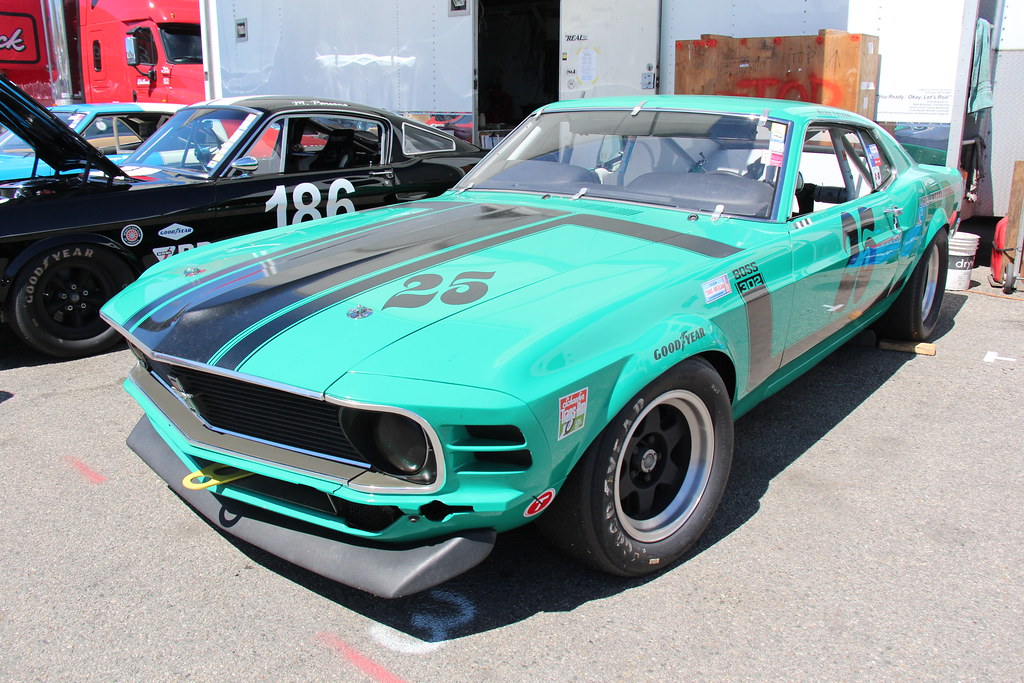
10. **1969 Boss 429 Mustang** The year 1969 saw Ford unleash an absolute beast onto the streets: the Boss 429 Mustang. This wasn’t just another Mustang; it was a homologation special, designed specifically to qualify Ford’s monstrous 429 cubic inch semi-hemi engine for NASCAR racing. The sheer size and power of this engine meant that Ford engineers had to undertake significant modifications to the car’s front end just to make it fit, a testament to its extreme, purpose-built nature.
With only 859 of these ‘monsters’ ever built, the Boss 429 is a true rarity in the automotive world, amplifying its collectible status immensely. It represented Ford’s emphatic answer to the formidable Hemi engines produced by its rivals, delivering a level of raw, unadulterated horsepower that few could match. This was a car for serious performance enthusiasts, a direct lineage from the race track to the road.
Beyond its incredible engine, the Boss 429 possessed a commanding presence, its aggressive stance and unique styling cues hinting at the immense power lurking beneath the hood. It wasn’t just fast; it was a symbol of American performance engineering at its peak, a legend on the track, and a highly sought-after piece of automotive history. Today, these powerful and exclusive Mustangs command prices well over $400,000, continuing to captivate collectors with their raw power and bold design.
Car Model Information: 2022 Honda Civic Sport
Caption: 1969 Boss 429
Layout: Longitudinal engine
Manufacturer: Ford Motor Company
Production: 1969–1970
Name: Mustang Boss 429
Class: Muscle car
BodyStyle: coupé
Assembly: Dearborn, Michigan
Height: 50.4 in
Abbr: on
Length: 187.4 in
Width: 71.7 in
Engine: 429 cuin
Transmission: manual transmission
Weight: 3870 lb
Categories: All Wikipedia articles needing clarification, All articles needing additional references, All articles with unsourced statements, Articles needing additional references from August 2008, Articles with short description
Summary: The Boss 429 Mustang is a high-performance Ford Mustang variant that was offered by Ford in 1969 and 1970. It featured a race-designed 429 cu in (7.0 L) semi-hemispherical head version of the big block 429 V8, offered in the car both to homologate the engine for NASCAR racing and to offer a bigger, more-powerful version of the popular small block 5 L Boss 302 Mustang.
The price of all the performance and modifications was steep: at nearly $5,000 a Boss 429 was roughly twice the price of the base model inline-6 Mustang. A total of 1,359 Boss 429s were produced.
Get more information about: Boss 429 Mustang
Buying a high-performing used car >>>
Brand: Ford Model: Boss 429 Mustang
Price: $25,849 Mileage: 16,061 mi.
Read more about: John Wick’s 1969 Mustang: How a Classic Car Became a Cinematic Icon
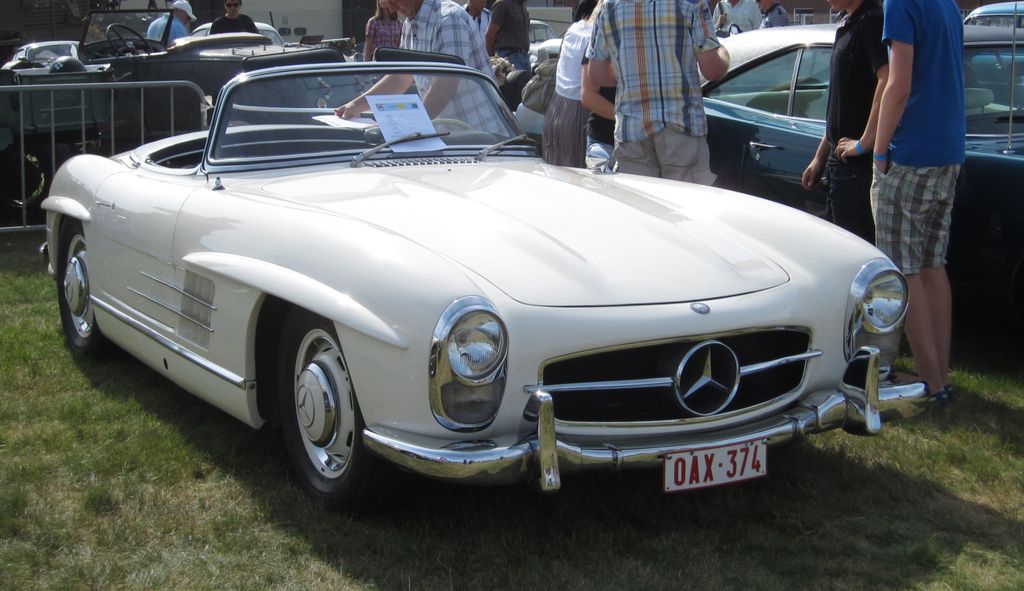
11. **1960 Mercedes-Benz 300SL Roadster** Stepping into the realm of quintessential European luxury and sophisticated performance, we find the magnificent 1960 Mercedes-Benz 300SL Roadster. This exquisite convertible was the open-top counterpart to the legendary ‘Gullwing’ coupe, offering the same groundbreaking engineering and breathtaking design, but with the added exhilaration of open-air motoring. It was, without question, a car that proclaimed its owner had truly ‘made it big.’
More than just an automobile, the 300SL Roadster was an ultimate status symbol of its era. Its sleek, flowing lines, combined with Mercedes-Benz’s renowned build quality and engineering prowess, projected an image of unparalleled prestige and wealth. If one of these beauties graced your driveway, it was a clear declaration of success and sophisticated taste, instantly recognizable and deeply admired.
Underneath its elegant exterior lay a direct-injected inline-six engine, a technological marvel for its time, providing exhilarating performance that matched its luxurious appointments. The 300SL Roadster delivered a sublime driving experience, blending high speed capability with impeccable road manners. Today, these stunning roadsters are highly coveted, regularly selling for over $1.5 million at auction, securing their place as timeless icons of automotive luxury and engineering excellence.
Car Model Information: 2022 Honda Civic Sport
Name: Mercedes-Benz SL (R129)
Manufacturer: ubl
Assembly: ubl
Production: ubl
BodyStyle: Convertible
Class: Sports car
Layout: Front-engine, rear-wheel-drive layout
Designer: ubl
Engine: ubl
Transmission: ubl
Wheelbase: 99.0 in
Abbr: on
Length: ubl
Width: 71.3 in
Height: ubl
Predecessor: Mercedes-Benz R107
Successor: Mercedes-Benz SL-Class (R230)
Categories: 1990s cars, 2000s cars, All articles with unsourced statements, Articles with short description, Articles with unsourced statements from May 2020
Summary: The Mercedes-Benz R129 SL is a roadster which was produced by Mercedes-Benz from 1988 until 2001. The R129 replaced the R107 in 1989 and was in its turn replaced by the R230 SL-Class in 2002 for the 2003 model year.
The R129 was offered as a two-door roadster with an automated (electro-hydraulic), fabric convertible roof; colour-matched, automated tonneau cover; and a manually detachable hardtop that could be fitted over the stored fabric convertible roof and tonneau. It was available with a variety of powertrains across its twelve-year production, including a V12 option used in the SL600.
Get more information about: Mercedes-Benz SL-Class (R129)
Buying a high-performing used car >>>
Brand: Mercedes-Benz Model: 300SL Roadster
Price: $25,849 Mileage: 16,061 mi.
Read more about: Boomers, Get Ready to Rev! These 12 Iconic ’60s Car Models Still Drive Our Dreams
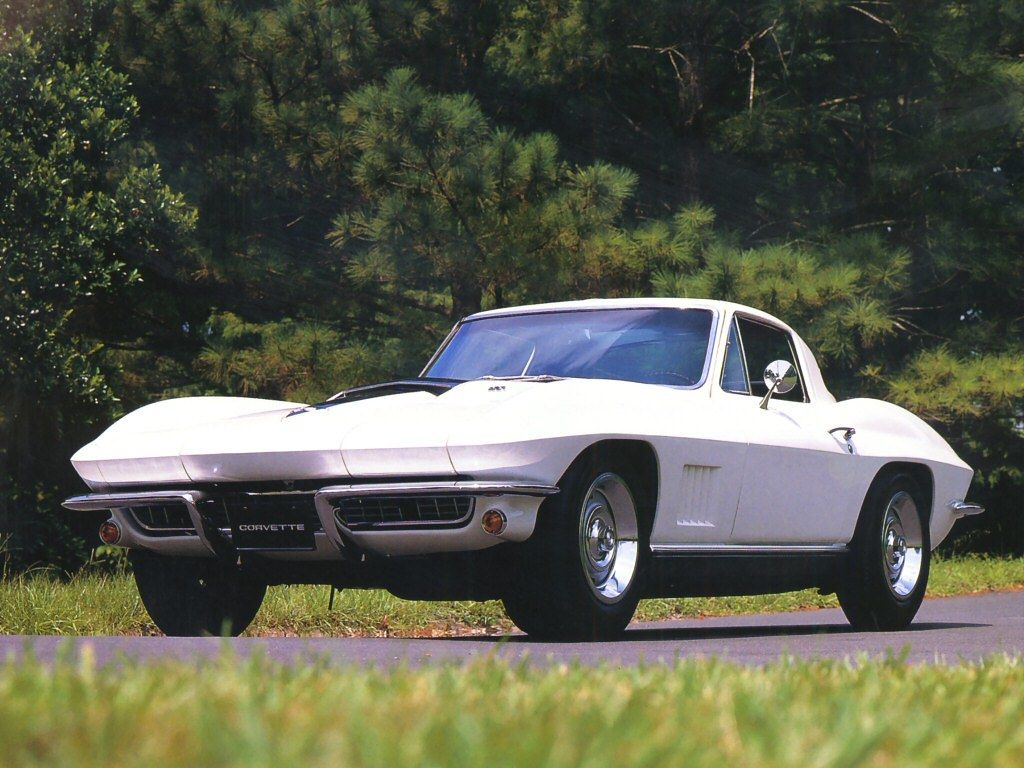
12. **1967 Chevrolet Corvette L88** For those who believed they knew American performance, the 1967 Chevrolet Corvette L88 arrived to redefine the very concept of muscle. This wasn’t just a powerful Corvette; it was a barely disguised race car, a homologation special built in extremely limited numbers for serious competition. Its sheer rarity and brutal performance have elevated it to near-mythical status among collectors and enthusiasts alike.
Chevrolet’s approach to the L88 was quite audacious: they intentionally underrated its horsepower at 430 to discourage “regular folks” from buying it. The truth, however, was far more exhilarating; these beasts churned out closer to an astonishing 560 horsepower, making them one of the most potent street-legal machines of the decade. This was a car that demanded respect and a skilled hand, designed for the track first and foremost.
With only 20 L88 Corvettes ever built in 1967, each example is an automotive jewel, making them among the rarest and most valuable ‘Vettes ever produced. Their scarcity, combined with their blistering performance and racing pedigree, has driven their value into the stratosphere. These incredible beauties have commanded prices exceeding $3.5 million at auction, cementing their legacy as the ultimate expression of Chevrolet’s no-holds-barred approach to high performance in the 1960s.
Car Model Information: 2004 Chevrolet Corvette Base
Name: Chevrolet Corvette
Caption: 2021 Chevrolet Corvette C8
Manufacturer: Chevrolet
Production: 1953–present
ModelYears: bulleted list
Assembly: bulleted list
Class: Sports car
BodyStyle: coupé
Layout: Front-engine, rear-wheel-drive layout,Rear mid-engine, rear-wheel-drive layout
Categories: 1950s cars, 1960s cars, 1970s cars, 1980s cars, 1990s cars
Summary: The Chevrolet Corvette is a line of American two-door, two-seater sports cars manufactured and marketed by General Motors under the Chevrolet marque since 1953. Throughout eight generations, indicated sequentially as C1 to C8, the Corvette is noted for its performance, distinctive styling, lightweight fiberglass or composite bodywork, and competitive pricing. The Corvette has had domestic mass-produced two-seater competitors fielded by American Motors, Ford, and Chrysler; it is the only one continuously produced by a United States auto manufacturer. It serves as Chevrolet’s halo car.
In 1953, GM executives accepted a suggestion by Myron Scott, then the assistant director of the Public Relations department, to name the company’s new sports car after the corvette, a small, maneuverable warship. Initially, a relatively modest, lightweight 6‑cylinder convertible, subsequent introductions of V8 engines, competitive chassis innovations, and rear mid-engined layout have gradually moved the Corvette upmarket into the supercar class. In 1963, the second generation was introduced in coupe and convertible styles. The first three Corvette generations (1953–1982) employed body-on-frame construction, and since the C4 generation, introduced in 1983 as an early 1984 model, Corvettes have used GM’s unibody Y‑body platform. All Corvettes used front mid-engine configuration for seven generations, through 2019, and transitioned to a rear mid-engined layout with the C8 generation.
Initially manufactured in Flint, Michigan, and St. Louis, Missouri, the Corvette has been produced in Bowling Green, Kentucky, since 1981, which is also the location of the National Corvette Museum. The Corvette has become widely known as “America’s Sports Car.” Automotive News wrote that after being featured in the early 1960s television show Route 66, “the Corvette became synonymous with freedom and adventure,” ultimately becoming both “the most successful concept car in history and the most popular sports car in history.”
Get more information about: Chevrolet Corvette
Buying a high-performing used car >>>
Brand: Chevrolet Model: Corvette
Price: $23,629 Mileage: 29,579 mi.
Read more about: The Road Less Traveled (and Valued): 14 Classic Cars That Are Now Worth Less Than You Think

13. **1966 Lamborghini Miura** The automotive world changed forever with the unveiling of the 1966 Lamborghini Miura, widely celebrated as the first true ‘supercar.’ This Italian masterpiece wasn’t just a car; it was a revolution in exotic performance and styling, a dramatic departure from everything that had come before it. When this sleek, low-slung machine rolled into town, as one observer vividly recalled, “everything else looked old-fashioned – it was like seeing a spaceship among horse carriages!”
Marcello Gandini’s dramatic design for the Miura was utterly groundbreaking, featuring sensuous curves and an aggressive stance that turned heads universally. But its innovation wasn’t just skin deep; the Miura introduced a transversely mounted V12 engine positioned behind the driver, a mid-engine configuration that redefined sports car architecture. This bold layout provided exceptional balance and handling, setting a new standard for high-performance vehicles and captivating enthusiasts worldwide.
Beyond its stunning looks and revolutionary engineering, the Miura delivered breathtaking performance, making it a formidable presence on both road and track. Early P400 models are particularly prized today, representing the genesis of the modern supercar era. This combination of beauty, innovation, and visceral driving experience ensures the Miura remains a cherished symbol of 1960s Italian automotive artistry, with pristine examples fetching over $2 million at auction, continuing to inspire designers and enthusiasts alike.
Read more about: Revving Through History: The 14 Unforgettable Machines That Defined the Roaring Sixties Automotive Era
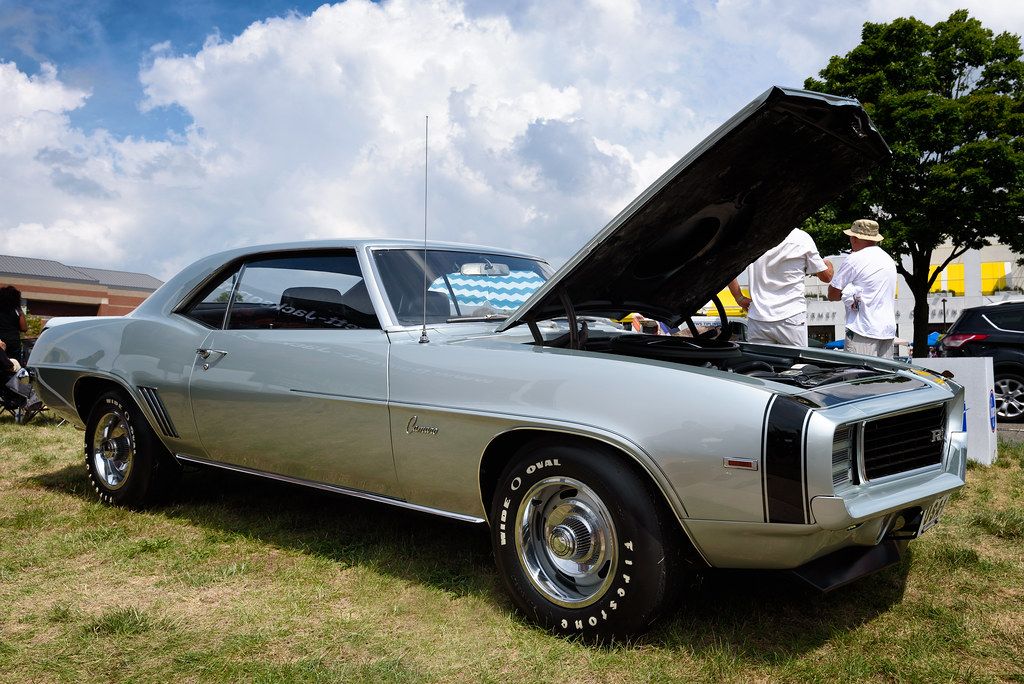
14. **1969 Chevrolet Camaro ZL1** As the 1960s drew to a close, Chevrolet unleashed one final, ferocious statement in the muscle car wars: the 1969 Chevrolet Camaro ZL1. This wasn’t a standard production model but rather a special drag-strip weapon, a Camaro engineered for one purpose – to dominate. Its heart was an all-aluminum 427-cubic-inch engine, a power plant so extreme it almost defied belief in a street car, giving the ZL1 near-mythical status among enthusiasts.
With an incredibly limited production run of only 69 units, the ZL1 stands as one of the rarest high-performance Chevys ever created, making it a cornerstone for any serious collector. This formidable engine was essentially a race car motor shoehorned into a street-legal chassis, unleashing a level of power that truly pushed the boundaries of what was considered roadworthy. Many buyers, it’s often said, had no idea just how potent these vehicles truly were.
The ZL1’s combination of immense power, lightweight design (thanks to that aluminum engine), and extreme exclusivity made it a legend on the drag strip and a symbol of American performance engineering at its zenith. Its formidable power and lightweight design ensured its formidable presence and cemented its legend. As a classic, the ZL1 continues to captivate collectors, celebrated for its unmatched speed, unique place in automotive lore, and its representation of the pinnacle of Chevrolet’s muscle car era performance.
Car Model Information: 2022 Honda Civic Sport
Name: Chevrolet Camaro
Manufacturer: Chevrolet
Production: 1966–2002,2009–2023
ModelYears: 1967–2002,2010–2024
Class: Pony car
BodyStyle: coupe,convertible
Platform: GM F platform,GM Zeta platform,GM Alpha platform
Layout: Front-engine, rear-wheel-drive layout
Categories: 1970s cars, 1980s cars, 1990s cars, 2+2 coupés, 2000s cars
Summary: The Chevrolet Camaro is a mid-size American automobile manufactured by Chevrolet, classified as a pony car. It first went on sale on September 29, 1966, for the 1967 model year and was designed to compete with the Ford Mustang. The Camaro shared its platform and major components with the Firebird, produced by General Motors’ Pontiac division that was also introduced for the 1967 model year.
Four distinct generations of the Camaro were developed before production ended in 2002. The nameplate was revived on a concept car that evolved into the fifth-generation Camaro; production started on March 16, 2009.
Production of the sixth generation of the Camaro ended in December 2023, for the 2024 model year.
Get more information about: Chevrolet Camaro
Buying a high-performing used car >>>
Brand: Chevrolet Model: Camaro ZL1
Price: $25,849 Mileage: 16,061 mi.
Read more about: Unleash the Beasts: The Most Popular Classic Muscle Cars That Defined the ’60s and ’70s Golden Era
The 1960s truly were a golden age for the automobile, a decade where designers and engineers dared to dream big, pushing the boundaries of what was possible in terms of speed, style, and innovation. From the exotic allure of Italian supercars to the thunderous might of American muscle, each vehicle from this era tells a story of passion, ingenuity, and a relentless pursuit of automotive excellence. These machines are more than just metal and rubber; they are cherished pieces of history, artistic marvels, and tangible links to a thrilling past that continues to captivate and inspire. For collectors and enthusiasts alike, these vintage gems remain the ultimate ‘collector’s gold,’ embodying a spirit of freedom and power that echoes through the generations, making every glimpse, every roar, a journey back to glory days.

